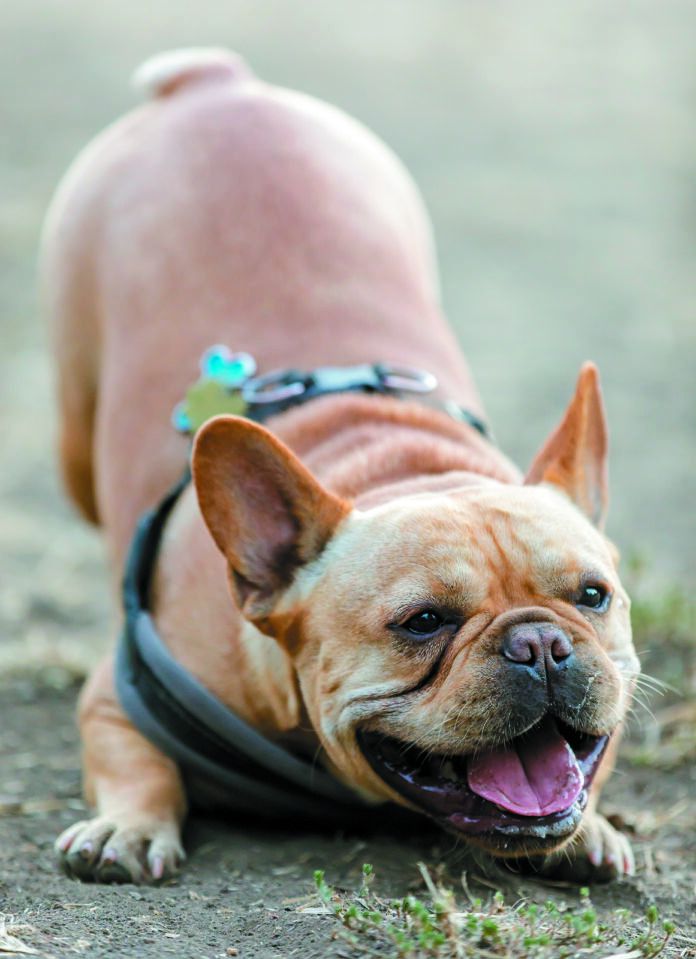We’ve all seen it. A dog stretches out her front legs and leans down on her elbows with her chest to the ground but leaves her rump in the air. It’s called a play bow. That’s because it’s an invitation — to another dog or to a person — to play. Most of the time.
Sometimes a play bow signifies anxiety or a feeling of being thwarted. In those cases it’s a displacement behavior, which is behavior that occurs out of context to try to cope with a situation that makes you feel ill at ease — like yawning when you’re not tired or scratching when you’re not itchy.
Think of how you might check your phone for messages while in a crowded elevator even though you just checked it a minute ago; you want to have already arrived rather than be where you are — between floors with a bunch of strangers. Or how you might fidget with something in the car while at a stoplight even though there’s no need to. Dogs engage in displacement behaviors, too.
Let’s say you tell your dog it’s time to go out and you attach her lead but then get distracted by an important text that you feel you have to answer right away. Having her expectation dashed, she may throw some play bows as a way of trying to cope with having to wait.
A play bow can also be used to diffuse another dog’s irritation. Stressed about a canine pal’s bad mood, a dog might engage in play bows not to initiate fun antics but to show deference in order not to get on the annoyed dog’s bad side.
As with other behaviors, it’s important to assess context in order to appropriately interpret what a dog is communicating, says the head of the Tufts Animal Behavior Clinic, Stephanie Borns-Weil, DVM. Fortunately, in the case of play bows, it’s often pretty easy to understand what’s going on. A dog who demonstrates a play bow while waiting for you to take her out clearly is not looking for you to throw a toy for her to fetch at that moment. She is dealing with her frustration about not being able to get the show on the road.





